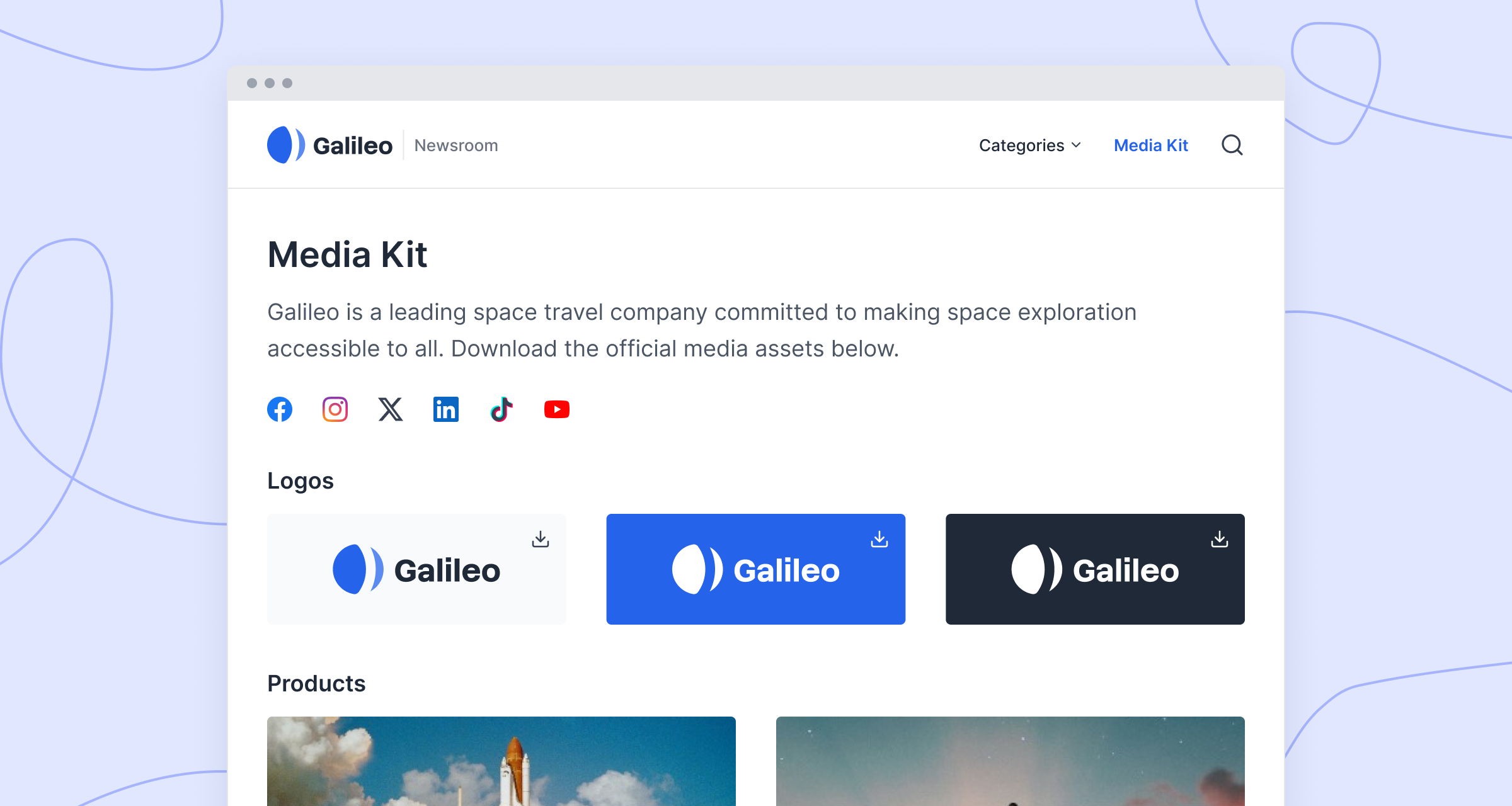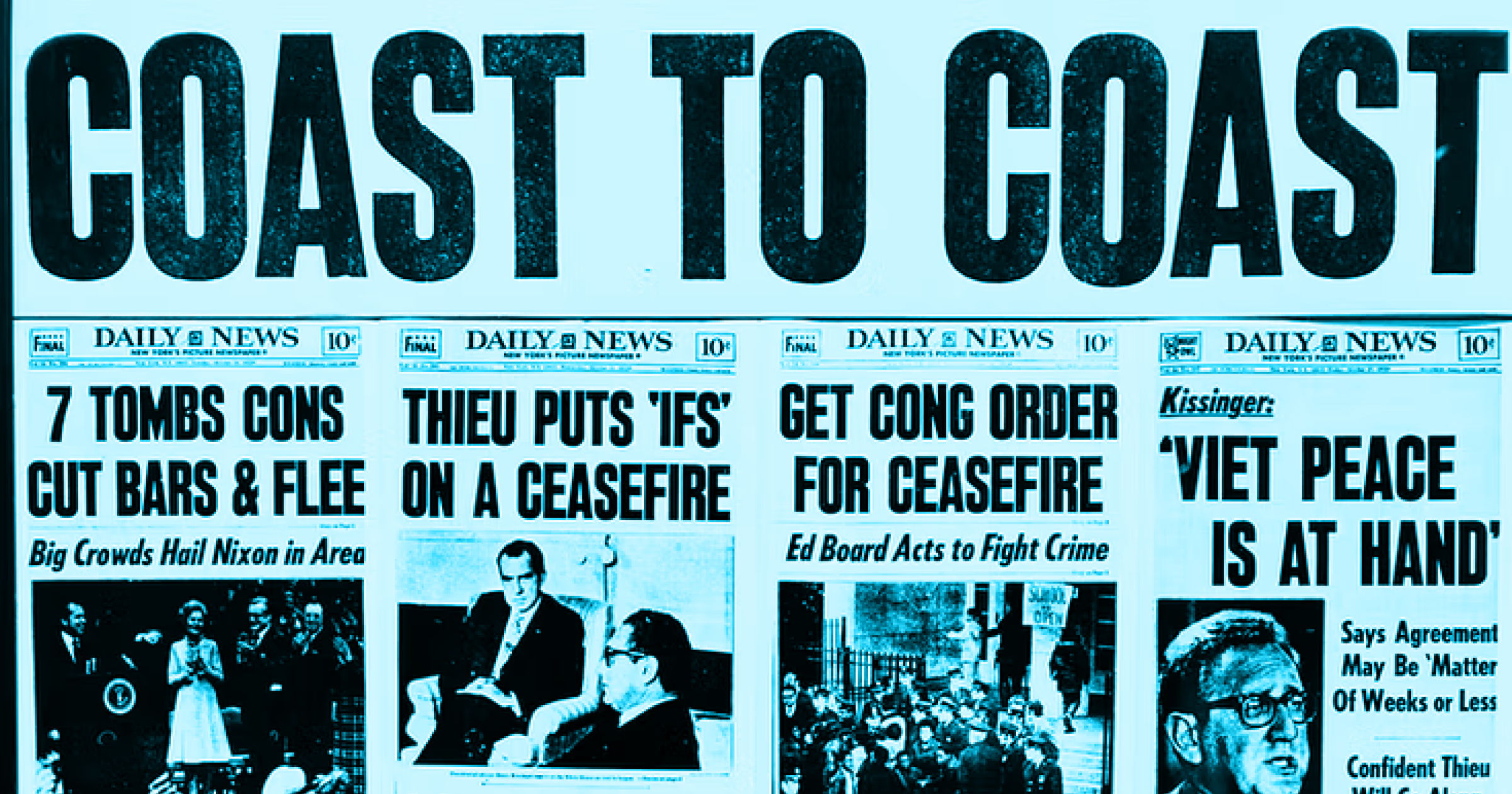How to write a press release for an event: Examples and template
Expert advice on how to announce and follow up on your big day.
Running an event is one of the most stressful things you can do, right up there with moving house, changing jobs, and going base-jumping.
What if no one attends? What if nobody covers it? How do you spread the word?
It all starts with a press release.
A well-crafted press release will help you not only spread the word about your upcoming event, it will also help you summarize your key selling points and centralize your media assets. Making it far easier to promote your event on social media, newsletters, and more.
Here's how you can guarantee that your event press release spreads like wildfire.
Ready to create your own press release?
- Publish and share professional, multimedia press releases
- Translate to 30+ languages in seconds with AI
- Free for your whole team for 14 days, no payment info required
There are four main types of event press releases, each serving a specific purpose.
- Upcoming closed events: These are used to tell journalists and influencers about an upcoming event and invite them to attend
- Closed events that have already taken place: These summarize the key outcomes of the event
- Upcoming open events: Press releases of this type aim to attract media coverage and public participation
- Open events that have already taken place: Highlight the event’s impact and achievements, as well as share key points and any subsequent assets (like photos, video recordings, and social posts from attendees)
This part follows most closely the conventional press release template, with a more pronounced focus on timeliness and the people involved.
Include, clearly, all the pertinent details:
- What, when, who, why, where
- Ticket or registration info (including early-bird tickets)
- Names of the key people involved
- Quotes & reviews if you have them
- Media assets
- Opportunities for interviews, press passes & exclusive content
- Contact details
Always keep your press release concise.
When writing an event press release, it’s important to structure your content effectively to capture media attention and convey key details. By following a clear event press release format and including these essential elements, you ensure that your message is compelling and easy to understand.
Your press release headline should grab attention and convey the essence of your event in a few words. Keep it concise and focused on the event's main takeaway for a catchy headline that will entice people to read further.
The lead should expand on the headline, offering a brief summary of the event. Address the who, what, when, where, and why to immediately capture the interest of your target audience.
In the body, dive into specifics about the event, such as its purpose, date, time, location, and any notable features or participants. Keep the focus on the most newsworthy aspects.
Adding quotes from key figures, such as event organizers or speakers, lends credibility and a human touch. Make sure your press release quotes provide insight or add value to your news.
At the end of your press release, include a press release boilerplate – this is basically your company description plus contact info for your press contact person, such as email address. This ensures media outlets know who to reach out to for more details.
To ensure your event press release captures attention and effectively promotes your event, follow these seven essential tips. Each step helps you create a press release that is concise, engaging, and impactful.
This needs to balance the excitement of an event announcement with a concise headline to get people excited. Use clear language to summarize the event’s main selling point and spark curiosity and encourage people to continue reading.
Give all the essential details in your first paragraph: the event name, date, time, location, and purpose. This allows readers to quickly understand what the event is about and whether it interests them.
Include quotes from key stakeholders, such as event organizers or notable speakers. These quotes should add a personal touch, offering unique insights or enthusiasm about the event, which helps build authority and credibility.
Every event has a unique angle or feature. Focus on what sets your event apart – whether it's a special guest, a first-time occurrence, or something innovative. This "news hook" should be prominent in your press release to pique media interest.
Make your press release easy to skim by using bullet points or subheadings (like these ones!) to break up the text. Readers should be able to extract key info quickly, increasing the chance they’ll stay engaged.
Incorporate high-quality visuals, such as high-quality images or videos, that complement your text. This makes your press release more engaging and can help it stand out. Media outlets often appreciate ready-to-use visuals for their stories. Pro tip: this is where having a press kit comes in super handy.
Before sending out your press release, thoroughly proofread it to catch any errors. Ensuring it's free of mistakes maintains professionalism and increases the likelihood of media coverage.
You can use a press release distribution service for reach, but the engagement and coverage figures on those aren't great. Instead, distribute your press release using targeted PR outreach software.
There are two main times when you should out your event press release, namely:
- When it's announced and ticketing is open
- After the event to summarize key points and share media assets
Depending on the scale and type of event, you might want to send out multiple press releases in the lead up to it. For example, if you're working up some steam around a big music festival, you can start talking about it months in advance.
Just make sure that every press release has a new angle. In the case of our music festival example, this could be a new artist announced for the event lineup. By releasing fresh details every time, you'll help build the buzz and answer the question of how to get press coverage for an event.
Let's look at some effective press releases for events for ideas on how you can use press releases to announce your next big event to a wider audience.
If you're going to be putting on regular or an annual event, then it's perfectly acceptable (and often expected) to send out a press release with an overview of all your planned events for the season.
The goal of sharing a calendar of upcoming events is a little different from that of a normal events press release. Rather than aiming for coverage right off the bat, what you want is to prime people for each event in your line-up. Treat this as your opportunity to bookmark space in contacts' calendars, arrange any exclusive interviews or content, and generally plan ahead.
See how this press release example for events from Pandex Hotels do it:
Example: Pandox Hotels announces spring events line-up

This has the advantage of relating the salient points of your press release to your contact at a glance, and is a particular advantage if you have a household name in your roster.
Example: Light & Life Announces New Year’s Eve Event with David Guetta in Brooklyn Warehouse

Who? What? When? Where?
These questions are even more important when it comes to promoting an event. (The "Why?" should be there too, but you can take more time over it.)
Take a look at the below example of a theatrical press release and notice just how much information they've managed to include – not to mention media assets – while keeping their content immensely scannable:
Example: Mustard - A surreal comedy about friends, real and imagined.

Not every journalist is going to be able to make it to your show, so give them all the media you can to make them feel like they were there. It will help them reflect the feeling of your event in their write-up and pair it with first-hand footage of what actually went on.
If you can, add images to your press release directly, so that it has a better visual impact and to make it easier for your contact to navigate. If you're worried about overloading your email with embedded multimedia and ending up in spam, use a service like Prezly to host and distribute your press releases, or link to your media assets online.
The other reason to lead with a bold visual? It's eye-catching. Better yet, it conveys the spirit of your event, setting the theme for the reader before they've even read a word.
Example: Feminist voices from the Middle East, North Africa & Europe speak out

Brevity being the soul of wit, it pays to keep your press releases to 500 words or fewer; in fact, the optimal press release length is 300 to 400 words.
Take a look at the below example for a good illustration of how a small amount of text can relate all the salient points of an announcement. For a fun exercise, have a think: what do you like about this press release? How does it make you feel? What could you do to improve it?
Example: Art event press release example

If your topic is flippant or theatrical, go heavy on the visuals; if you're announcing an exhibition of rare archeological finds or hosting an awards ceremony, include greater textual context.
Frame your event story with details about why it's newsworthy, particularly if you're dealing with a niche subject, and include expert quotes in your press release.
Remember, unlike with other types of news, you will likely want your event to be covered in generalist publications, not just those in your niche. Make sure it's easy for the journalist – and the public – to understand what your event is and why they should get excited about it.
Take DIVA's museum exhibition launch press release for example:
Example: Event press release example

See more event press release examples ▸
Whether you're announcing a corporate event or a new play, follow this simple event media release template and you won't go far wrong! Open event press release template in Google Docs – from here, go to "File" and click "Make a copy" to start writing your a press release for your event.
You can copy-paste the template straight into the Prezly press release story editor together with any visuals and media assets, and get it sent out with a zero obligation 14-day free trial.
The bullet points below should help you do a fantastic job.
Do:
- Lead with high-quality visuals
- Be clear on relevant details – the who, what, where and when
- Use an informative headline
- Namedrop keynote speakers and special guest speakers
- Tell people how they can attend and make it easy for them to register; include ticket prices
- Write for a human, not a robot – use "you", "I", and conversational language
- Provide context and expert quotes, particularly for more complex events like exhibitions
- If you have them, include reviews of your event or its previous iterations ⭐️⭐️⭐️⭐️⭐️
- Include a schedule and a speaker line-up with bios if relevant (for theatre, make mention of the writer, director and main cast)
- Embed as much multimedia as you can
- Boilerplate and company details
- For your post-event press release, include media assets, event attendance figures, and quotes for anyone who couldn't be there in person
- Consider incorporating social media PR into your launch strategy (particularly if your event is online)
- Clearly state your contact details as well as the event website, social media channels, and any other relevant information
- See also how to write a press release
Don't:
- CAPS LOCK your pitch subject line or go wild with the punctuation
- Include heavy attachments in your emails (use a press kit instead)
Oh, and by the way, Prezly has many PR tools that can make this process so much easier. Check out our press release software and our PR analytics tools.
Ready to create your own press release?
- Publish and share professional, multimedia press releases
- Translate to 30+ languages in seconds with AI
- Free for your whole team for 14 days, no payment info required


.jpg)
.jpg)